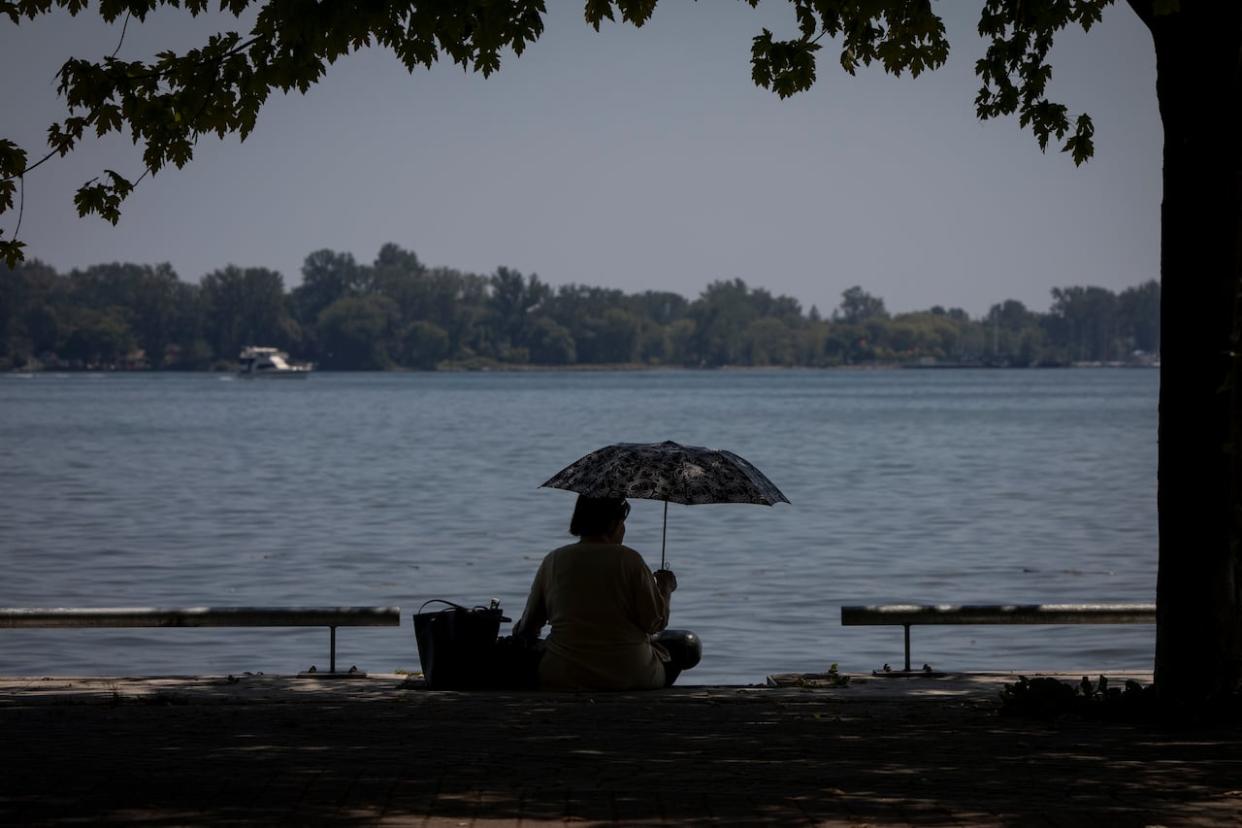4 things to know about the 'oppressive' heat wave descending on Ontario and Quebec

Millions of people are under a heat warning in Ontario, Quebec and New Brunswick, with Environment and Climate Change Canada warning that temperatures could reach as high as 35 C.
The weather service is warning of "dangerously hot and humid conditions" in parts of Ontario and Quebec in particular.
Here's what you need to know.
How hot will it get?
Humidex values, which combine the air temperature with humidity to calculate what heat feels like to the average person, could reach 45 C in parts of Quebec and Ontario.
The overnight lows are expected to remain above 20 C.
In New Brunswick, the conditions are slightly more moderate, with a forecast high of 33 C and humidex high of 41 C in Fredericton.
Dave Phillips, senior climatologist with Environment and Climate Change Canada, described the system as a massive heat dome, which is a high-pressure system that works to trap high temperatures near the Earth's surface. The heat rises and then gets pushed back down, like a convection oven, he said.
"It's almost going to be what you see in a jungle kind of situation with the tropical nights," he said in an interview, warning that the heat could be "very oppressive."
How long will it last?
The heat wave is expected to last through Thursday evening, with highs expected a day prior.
The mass of warm air is coming from the United States, where more than70 million people are under heat advisories or watches on Monday, stretching from the Southwest northward up through Denver and into Chicago.
Is this unusual?
Heat waves are becoming increasingly extreme as the climate warms, experts say. A rapid forecast analysis by Climate Central, a U.S.-based research group, estimated that the high temperatures in the eastern U.S. forecast for Tuesday to Thursday were made twice as likely due to climate change.
"Human-caused climate change makes the heat season start earlier and makes heat waves hotter and more dangerous," said Andrew Pershing, director of climate science at Climate Central.
Areport last month by the same group, along with World Weather Attribution and the Red Cross Red Crescent Climate Centre, examined 76 extreme heat waves across 90 countries over a 12-month period starting May 15, 2023.
The report says in that period, 6.3 billion people — roughly 78 per cent of the population — experienced at least 31 days of extreme heat that were "made at least two times more likely due to human-caused climate change."
Environment and Climate Change Canada is forecasting higher-than-normal temperatures throughout most of Canada this summer, after the hottest year on record.
How can I stay cool?
Extreme heat is a major health risk, particularly for older adults, infants and young children, and people with disabilities or mobility issues. Here are some tips to stay cool:
Drink plenty of water, even before you feel thirsty, to avoid dehydration.
Find a place with air conditioning to hang out, like a shopping centre, library, community centre, swimming facility or grocery store. Many cities offer cooling centres during periods of extreme heat.
Be on guard for symptoms of heat-related illnesses, which include heat stroke, heat exhaustion, heat rash and heat cramps.
Avoid intense or moderately intense physical activity, especially during 11 a.m. to 4 p.m. All workers should take regularly scheduled breaks in a cool or shaded space.

 Yahoo News
Yahoo News 